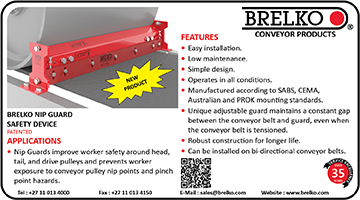As a mining journalist, I’m obviously favourably disposed towards mining but, even so, I can’t help thinking that some deposits are better left in the ground. A case in point is the Kangaluwi copper deposit in Zambia. It is something of an anomaly as most of the copper resources for which Zambia is famed are found on the Zambian Copperbelt, just to the south of the border with the DRC. By contrast, Kangaluwi sits in splendid isolation far to the south, close to the Zambezi River which forms the border with Zimbabwe and in the middle of what is indisputably one of Africa’s most beautiful wildlife areas, the Lower Zambezi National Park.
 One might think that Kangaluwi’s location in a protected area would rule out any chance of it being developed into a mine. Not a bit of it. The deposit attracted the attention of Australian junior Zambezi Resources in the early 2000s and the company – working through a Zambian subsidiary known as Mwembeshi Resources – subsequently carried out various exploration programmes and studies, culminating in the preparation of an Environmental Impact Statement (EIS) which was approved by the Zambian government in 2014 (despite having been earlier rejected by ZEMA, the Zambian Environmental Management Agency). A mining permit was subsequently issued.
One might think that Kangaluwi’s location in a protected area would rule out any chance of it being developed into a mine. Not a bit of it. The deposit attracted the attention of Australian junior Zambezi Resources in the early 2000s and the company – working through a Zambian subsidiary known as Mwembeshi Resources – subsequently carried out various exploration programmes and studies, culminating in the preparation of an Environmental Impact Statement (EIS) which was approved by the Zambian government in 2014 (despite having been earlier rejected by ZEMA, the Zambian Environmental Management Agency). A mining permit was subsequently issued.
Opposition to the proposed mine – an open-pit operation – by various organisations within Zambia and a court challenge to the mining permit led to the project being put on hold – and it stayed that way till a few weeks ago when the High Court in Lusaka effectively ruled that the mine could go ahead. The subsequent uproar from parties opposed to the mine has led to the Zambian government saying that no mining activities will be allowed in the national park. The mining licence, however, has not been revoked so it would be premature to say that the Kangaluwi project is finally dead.
Zambezi Resources (now known as Trek Metals) no longer owns the project. The company – currently focused on a lead-zinc project in Gabon – announced in April this year it had sold Kangaluwi for just A$1,1 million to Grand Resources, a Dubai-based investment company. Grand Resources is a bit of an unknown quantity, with no one apparently knowing who its owners are – although there has been speculation that there are Chinese interests behind it.
If Kangaluwi does ever go ahead, it would not be the first mine in the Lower Zambezi National Park. Apparently a tiny gold mine – known as Chakwenga – operated there back in the 1930s and 40s, producing (according to one source) around 58 kg of gold (a paltry 1 864 ounces). But of course in those days the area was not protected, the current national park having only been proclaimed in the 1980s.
I remember covering Kangaluwi about ten years back. My recollection is that Zambezi Resources was planning a relatively small 1,5 Mt/a open-pit operation which would produce around 14 000 t/a of copper in concentrate, with a small gold credit. The company was very aware of the opposition to mining in the park and was promising one of the ‘greenest’ copper mines in existence to anyone who listened. It pointed to the Palabora copper mine and the now-defunct Tshikondeni coal mine, both next to Kruger National Park, as examples of mines which co-existed harmoniously with a national park.
ZEMA, however, was not impressed with the EIS it eventually received nor was a group of experts who contributed to an evaluation report on the project in 2014 for the Lower Zambezi Tourism Association (admittedly not an impartial body). They concluded that there were a “number of critical unanswered questions around the economic value of this project, its full scope, and its potential impacts” and said there was “no convincing nor even coherent economic argument for allowing this mine to proceed.”
I never managed to get to Kangaluwi although I have visited the Lower Zambezi National Park and must have been at various times during my stay just a few kilometres from the proposed site of operations. It’s worth pointing out, of course, that the park lies directly across the river from Mana Pools in Zimbabwe, a world heritage site.
Somewhat ironically, when I visited the park I stayed in a riverside lodge close to the park entrance which was owned then (and may still be, for all I know) by a well-known copper-mining personality!
What happens now with Kangaluwi is anybody’s guess but personally I’m hoping that it will quietly go away although I acknowledge that some readers might disagree with me. For those, who would like to know more about the project, there is a considerable amount of material that can be found on the internet, including some excellent articles by Sharon Gilbert-Rivett which have appeared on the ‘Daily Maverick’ site and which are well worth reading.
Arthur Tassel











